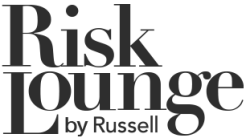Archive
INTEGRATED RISK MANAGEMENT FOR THE SPECIALTY CLASSES
Wednesday 09 May 2012
Author: Russell Group

Suki Basi describes the approach for integrated risk management for the specialty classes.
The specialty classes in recent years have delivered market losses, such as Madoff, that have developed beyond initial estimates, and are trending to higher exposure levels even though corresponding loss frequencies may not necessarily be trending upwards. Furthermore, as illustrated by Deepwater there is the threat of cross-class clash, which requires a deeper knowledge of underlying risk and the interaction of that risk with the portfolio. This calls for more robust risk management.
The specialty classes differ in the structure of risk, capture of underlying data, size of portfolio data, naming convention being used and attachment methodology being applied, which makes a robust approach to risk management more complex. Inevitably, this has lead to the current situation where bespoke approaches have been implemented for each class with the obvious disadvantage of an incomplete view of risk at the enterprise level.
Robust risk management control is essential for optimal capital utilisation and can only be delivered by an approach which integrates each of the specialty classes into a common and resilient framework. Integrated risk management for the specialty classes is defined as an approach that rationalises the classes into a framework which supports the differences whilst enabling each class to deliver a consistent exposure reporting mechanism to risk and solvency management.
In our view, such an approach has 6 core areas of functionality: -
- Data capture and Management - functionality for managing large and complex data volumes, validating data streams, intelligent logic for naming issues, and integration of third party data.
- Risk Model – Comprehensive capture of portfolio and underlying risk data whether insurance, reinsurance or retrocession and class of business (aviation, marine, casualty, etc).
- Analytical Architecture – needs to be open to user parameterization, generate user-defined event sets and scale with processing demand.
- Aggregate Management - calculating a company’s portfolio loss for a given market loss, taking into account all portfolio features, prior erosion from actual losses, with results gross or net of outwards reinsurance and reinstatement premium.
- Pricing - simulation based deal pricing driven by user-defined event sets and supporting return on capital and target loss ratio methodologies.
- Portfolio Modeling - simulation of user-defined event sets through the entire portfolio for use in reserving, business planning, reinsurance purchase strategy and capital management.
This approach provides a bottom-up approach to risk management which when combined with enterprise wide risk and solvency management delivers more certainty over exposure management and capital utilisation.





